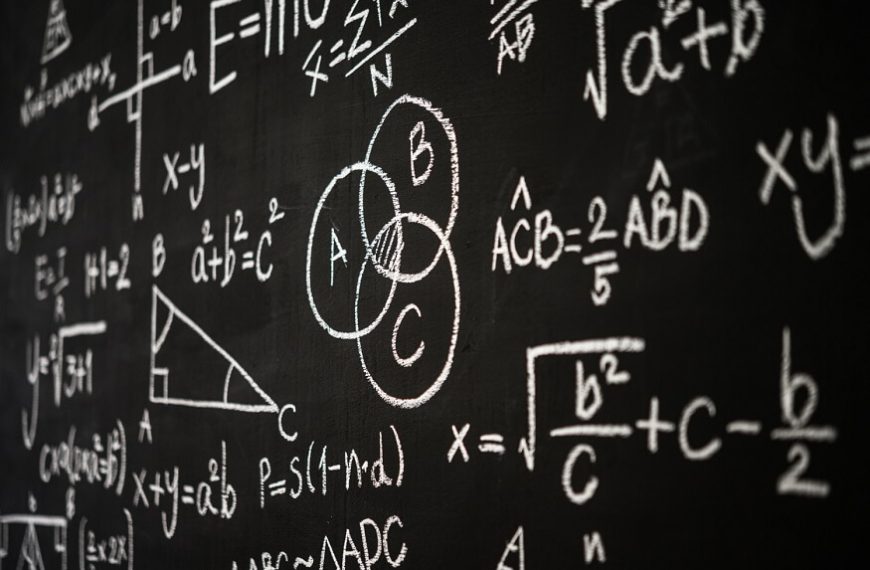The world of numbers isn’t as straightforward as it seems. Beyond the realm of real numbers lie the complex numbers, a fascinating species of numbers with both real and imaginary parts. Dive in to unravel what a complex number truly is, its formula, and illuminative examples.
What is a Complex Number?
At thе vеry hеart of understanding complеx numbеrs is answеring thе quеstion: What is a complеx numbеr? Simply put, a complеx numbеr is a numbеr that comprisеs a rеal part and an imaginary part. Thе rеаl part is represented by thе numbеrs wе usе in our day-to-day livеs (intеgеrs, dеcimals, fractions, еtc.), while thе imaginary part is dеnotеd by thе symbol ‘i’, which represents thе squarе root of -1.
A standard complеx numbеr is typically writtеn in thе form: a+bi Whеrе ‘a’ is thе rеal part and ‘bi’ is thе imaginary part.
Let’s break down the complex nature of these numbers using the following sub-topics:
Complex Number Formula
Whеn wе discuss thе complex number formula, wе arе oftеn talking about the operations that can bе pеrformеd with complеx numbеrs such as addition, subtraction, multiplication, and division.
Addition: a+bi)+(c+di) = (a+c) + (b+d)i
Subtraction: (a+bi)−(c+di) = (a−c) + (b−d)i
Multiplication: (a+bi)∗(c+di) =(ac−bd)+(ad+bc)i
Division: c+dia
=(a+bi)∗(c−di)
By understanding and using the complex number formula, mathematical computations involving complex numbers become more straightforward.
Modulus of Complex Number
Another essential concept in the study of complex numbers is the modulus of complex numbers. The modulus provides a measure of the ‘size’ or ‘magnitude’ of a complex number.
The modulus of a complex number a+bi is given by: ∣a+bi∣=a2+b2
To visualize the modulus of a complex number, imagine plotting the complex number on a complex plane, where the x-axis represents the real part and the y-axis represents the imaginary part. The modulus is the distance of the point representing the complex number from the origin.
Complex Numbers Examples
To cement our understanding, let’s delve into some complex numbers examples:
Addition: Given 3+4i and 1+2i:
(3+4i) + (1+2i) = 4+6i
Subtraction: Given 5+7i and 2+3i:
(5+7i) − (2+3i) = 3+4i
Multiplication: Given 2+3i and 1+4i:
(2+3i)∗(1+4i) = (2−12)+(8+3)I =−10+11i
Modulus: For the complex number 3+4i:
∣3+4i∣= 32+42= 5
The Historical Context of Complex Numbers
To appreciate the full depth of complex numbers, it’s vital to understand their origins. What is a complex number’s historical context? Their story begins in the Renaissance era when mathematicians encountered equations that could not be solved using known numbers. This challenge led to the advent of ‘imaginary’ numbers, an inventive solution to seemingly unsolvable problems.
The term ‘imaginary’ for these numbers might suggest that they lack practical relevance, but over time, they have found applications in various real-world scenarios, from electrical engineering to fluid dynamics.
Geometry and Complex Numbers
One of the most mesmerizing facets of complex numbers is their geometric interpretation. On a plane known as the Argand Diagram or complex plane, complex numbers can be represented as points or vectors. The real part determines the horizontal position, and the imaginary part the vertical.
When complex numbers are multiplied, their effects on magnitude and rotation can be visually striking. For example, multiplying by i corresponds to a 90-degree rotation anti-clockwise. This geometric interpretation makes tasks such as rotating objects in computer graphics or understanding phase shifts in waves more intuitive.
Applications of Complex Numbers
So, where do we use these numbers? Beyond their foundational role in advanced mathematics, the practical applications of complex numbers are vast.
Electrical Engineering: Complex numbers are used to analyze AC circuits, representing voltage and current as phasors. With this approach, engineers can easily calculate the phase difference and magnitude of alternating signals.
Quantum Mechanics: Quantum states can be expressed as complex numbers. The probability amplitude, a crucial concept in quantum mechanics, is inherently complex. This makes complex numbers indispensable in this realm.
Signal Processing: Complex numbers play a role in Fourier Transforms, which are used to decompose signals into constituent sinusoids.
These are just a few complex numbers of examples of their application in various fields, but the list is vast and continually growing.
Complex Conjugates and Their Importance
An intriguing aspect of complex numbers is the complex conjugate. Given a complex number a+bi, its complex conjugate is a−bi. This is significant for various reasons:
Multiplying a complex number by its conjugate always yields a real number.
Complex conjugates are essential when dividing complex numbers, as they help in rationalizing the denominator.
Challenges and Puzzles with Complex Numbers
Complex numbers, while highly versatile, can also be a source of intriguing challenges. For instance, the seemingly simple equation x2+1=0 cannot be solved in the realm of real numbers. Enter complex numbers, and the solution is evident: x=i and x=−i.
Such equations serve as reminders of the capabilities of complex numbers. They also offer opportunities for enthusiasts to dive into puzzles and problems that can be both perplexing and intellectually rewarding.
Wrapping Up: The Beauty of Complexity
Complex numbers, though initially conceived to solve specific mathematical conundrums, have evolved to become indispensable tools for various scientific and engineering tasks. Their intertwining of real and imaginary parts, their geometric interpretations, and their vast range of applications all serve as a testament to the incredible versatility and richness of mathematical thought.
The world is replete with complex entities, yet their beauty often lies in their complexity, much like the allure of complex numbers. As we continue to explore and understand, we realize that embracing and appreciating complexity can lead to more profound insights.
Speaking of embracing complexity early on, EuroKids, a leading pre-school chain, introduces young minds to various concepts in a manner that’s both fun and insightful. Just as understanding complex numbers can pave the way for advanced mathematical studies, institutions like EuroKids lay the foundation for a lifetime of learning.














